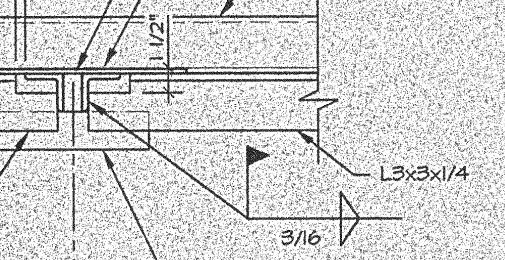awa5114
Structural
- Feb 1, 2016
- 135
I have a single angle connected to a double angle via a 3/16" weld

I know there is a factored, applied moment at that connection. I would like to ask how I can go about checking the capacity of this connection for moment? There is a lot of stuff in AISC for welds in Chapter J, partially and fully restrained moment connections but I am not sure where to start. What chapter/section of AISC codifies this kind of problem?

I know there is a factored, applied moment at that connection. I would like to ask how I can go about checking the capacity of this connection for moment? There is a lot of stuff in AISC for welds in Chapter J, partially and fully restrained moment connections but I am not sure where to start. What chapter/section of AISC codifies this kind of problem?
